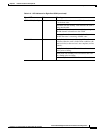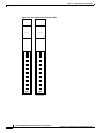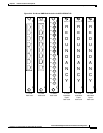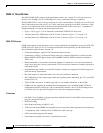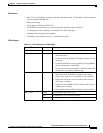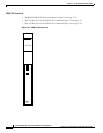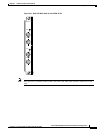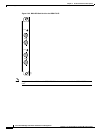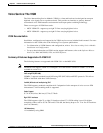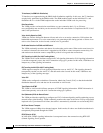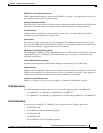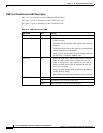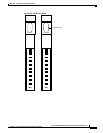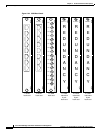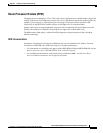
2-55
Cisco MGX 8230 Edge Concentrator Installation and Configuration
Release 1.1.31, Part Number 78-11215-03 Rev. B0, May 2001
Chapter 2 Module and Service Descriptions
Frame Relay Service Modules
Voice Service: The VISM
The Voice Interworking Service Module (VISM) is a front and back card set designed to transport
digitized voice signals across a packet network. This provides an interface or gateway between
conventional voice TDM networks and networks based upon packet switching technology.
There are two types of VISM front cards:
• MGX-VISM-8T1: supports up to eight T1 lines carrying digitized voice
• MGX-VISM-8E1: supports up to eight E1 lines carrying digitized voice.
VISM Documentation
Installation, configuration and support for the VISM services are not included in this manual. For more
information on the VISM, refer to the following Cisco Systems publications:
• For information on VISM features and configuration, refer to Voice Interworking Service Module
Installation and Configuration.
• For up to date information on VISM version support and features, refer to the Software Release
Notes Cisco WAN MGX 8850, 8230, and 8250 Software.
Summary of Features Supported with VISM 2.0.1
The following features are supported with VISM 2.0.1 on the MGX 8230.
Note The MGX 8230 supports VISM 2.0.1 and higher. All of the features available in VISM 1.5.5 are also
available in version 2.0.1
VoIP using RTP (RFC 1889)
VISMR1.5 supports standards-based VoIP using RTP (RFC1889) and RTCP protocols. This allows
VISM to interwork with other VoIP Gateways.
VoAAL2 (With sub-cell multiplexing) PVC
The VISM supports standards-compliant AAL2 adaptation for the transport of voice over an ATM
infrastructure. AAL2 trunking mode is supported.
Codec Support
G.711 PCM (A-law, Mu-law), G.726, G.729a/b
Eight T1/E1 Interfaces
The VISM supports eight T1 or eight E1 interfaces when G.711 PCM coding is used. For higher
complexity coders such as G.726-32K and G.729a-8K, the density drops to six T1 or five E1 interfaces
(max 145 channels).
1:N Redundancy
1:N redundancy using SRM.



